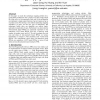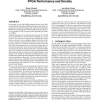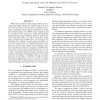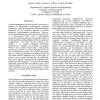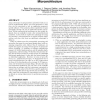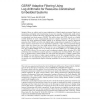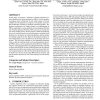FPGA
2000
ACM
14 years 11 months ago
2000
ACM
In this paper, we study the technology mapping problem for a novel FPGA architecture that is based on k-input single-output PLA-like cells, or, k/m-macrocells. Each cell in this a...
FPGA
2000
ACM
14 years 11 months ago
2000
ACM
In this paper we revisit the FPGA architectural issue of the effect of logic block functionality on FPGA performance and density. In particular, in the context of lookup table, cl...
FPL
2006
Springer
14 years 11 months ago
2006
Springer
Computing applications in FPGAs are commonly built from repetitive structures of computing and/or memory elements. In many cases, application performance depends on the degree of ...
FPL
2006
Springer
14 years 11 months ago
2006
Springer
FPGA devices exhibit manufacturing variability. Device ratings and Timing margins are typically used in order to cope with inter-device and intra-device variability respectively. ...
FPL
2006
Springer
14 years 11 months ago
2006
Springer
Given large circuit sizes, high clock frequencies, and possibly extreme operating environments, Field Programmable Gate Arrays (FPGAs) are capable of heating beyond their designed...
FPL
2006
Springer
14 years 11 months ago
2006
Springer
A Field Programmable Gate Array (FPGA), when used as a platform for implementing special-purpose computing architectures, offers the potential for increased functional parallelism...
FPGA
2006
ACM
14 years 11 months ago
2006
ACM
A key advantage of soft processors (processors built on an FPGA programmable fabric) over hard processors is that they can be customized to suit an application program's spec...
FPGA
2006
ACM
14 years 11 months ago
2006
ACM
FPGA
2006
ACM
14 years 11 months ago
2006
ACM
Embedded memory blocks are important resources in contemporary FPGA devices. When targeting FPGAs, application designers often specify high-level memory functions which exhibit a ...
115
click to vote
FPGA
2006
ACM
14 years 11 months ago
2006
ACM
In this paper, we propose a technique to flexibly implement genetic algorithms for various problems on FPGAs. For the purpose, we propose a basic architecture for GA which consist...
